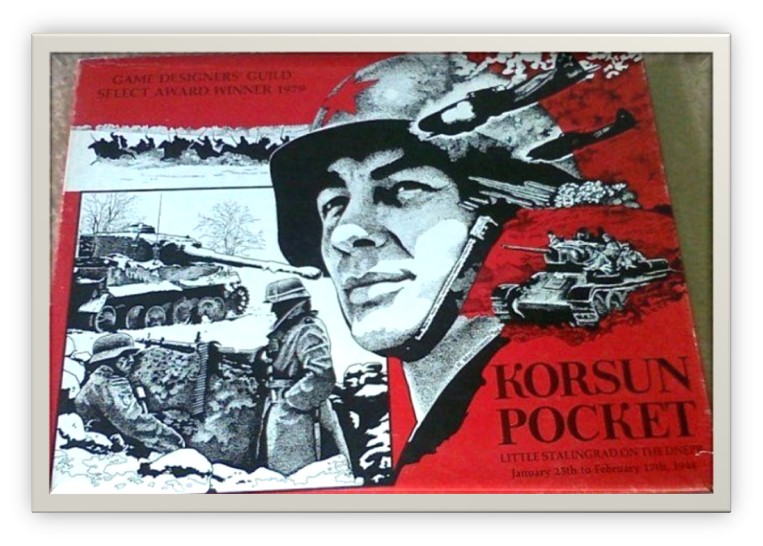
[Kev here – over the past several months I’ve had a few conversations with and been entertained by Jacks loquacious commentary on the Eastern Front in the Eastern Front Boardgames group on facebook. He, Eric Walters, and a few others in the past had done some live streams together back when that was not so ‘cool & trendy’ as it is now. So after one of those chats I asked Jack if he would like to share some about the evolution of Korsun 2 and where it ‘came from’ . I had my doubts about rebooting this monster. Would there be a thoughtful fresh approach or as some of the images tended to indicate, just another overly chromed, congested monster for you to admire but never play? A recent copy of the rules found its way to my inbox, and that was impressive enough for me to want to pre order. So here is Jack in his own words….all of them. ]
By Jack Radey
Back in the day, about 1978 or so, I was working at Povey Machine Works, making nuclear reactor parts for Diablo Canyon power plants. While watching the lathe take a long chip, I was scribbling rules in a notebook to upgrade DNO as a wargame. The job was fulfilling none of my life’s ambitions, and when I was laid off, I thought it time for a career change. My wife was a commercial artist, I believed my wargame rules were as good as any I’d read. I had just played Wacht Am Rhine, and really enjoyed it. SPI had brought out its book on wargame design (should have been entitled, “How To Compete With Us.) Talked it over with the wife, figured we could produce a game. My plan was to get a job at a wargame company, selling them my design and getting hired.
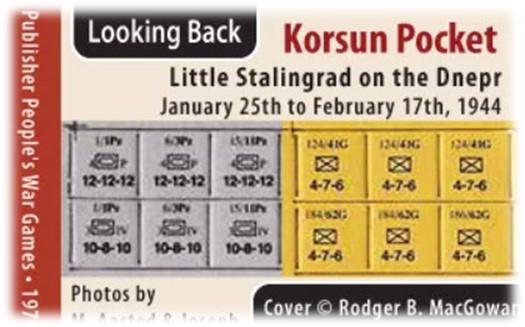
Things didn’t quite work out that way, but with some help from Chaosium and others, encouragement from Lou Zocchi, I worked for a year and my wife worked even harder and we had us a wargame. It got a great reception, much praise, not a lot of money though, and no job in wargaming (couple of nibbles – GDW and SPI – but no bites.)
So I figured to go on with People’s War Games and made a go of it for a while, then the big market (wargame) crash of 1984 showed me this would not work, and I did one more People’s War Games game, and a bunch for Clash of Arms, then, nothing.
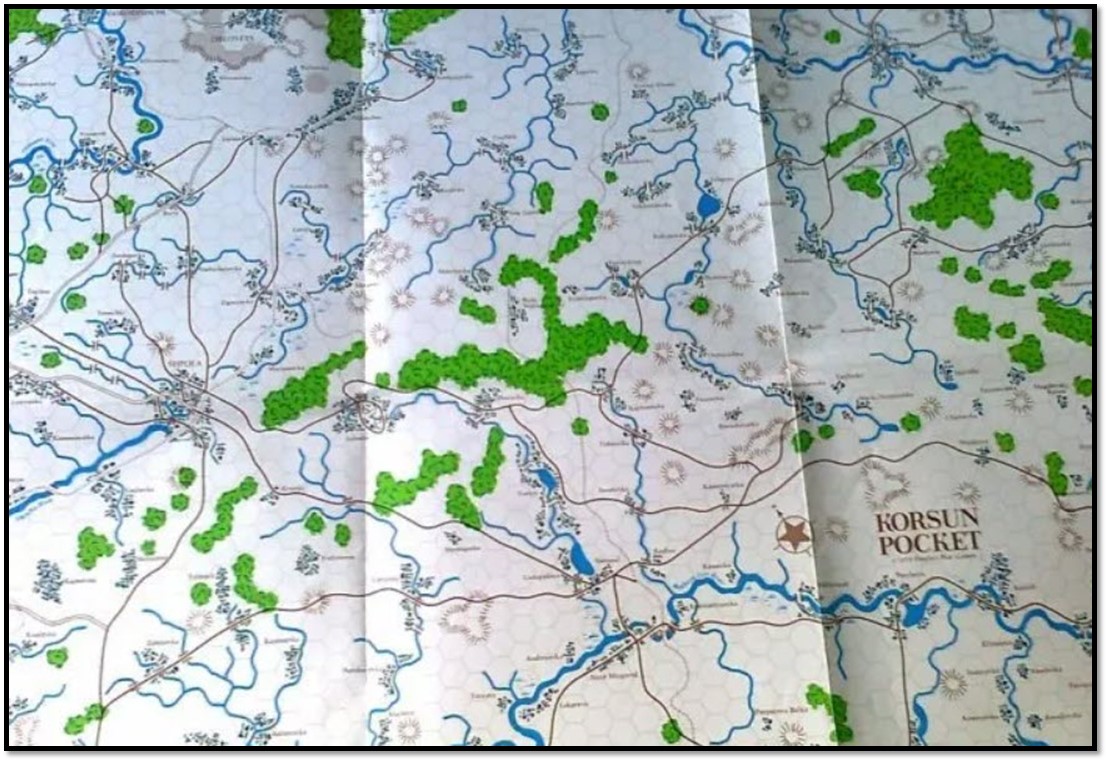
Many years later I got offers to reprint Korsun Pocket. Some large numbers of dollars were discussed, but the first two went sour. One made an offer and then told me, after I tentatively accepted, that he would have to talk with his wife about it. I had my doubts about this guy any way, and that tore it. The second offer was likewise tempting, and a contract signed, but then the second letter from them included a threat of a law suit. Uh, lets not play. Turned out this was a very wise move.
Finally Jeffrey Tibbets made me an offer. I’d known Jeff since KP 1 came out, I had written a column for his magazine. I get along well with Jeff, though we’ve had differences. I was a bit jaundiced by offers. It was generous, but I asked, “Is there a market for a monster east front game these days? I’m confident you can publish it. But it’s a BIG game, and I don’t want it to destroy your company.” He assured me. And away we went.
Slowly. First I completely redid the OB. With some help from Charles Sharp I greatly improved the Soviet line up. No more JS-2 tanks, no JSU-122s, no T-34-85s, no Ferdinands (learned that when the Soviets said “Ferdinand” they meant StG of any kind.) The Soviet cavalry was completely recast, no more huge regiments, got their own separate tank support though. The German panzergrenadiers were no longer assumed to have StGs organic. I had some fairly unsophisticated ideas in 1978, yes indeedy.
A big change concerned Katyushas. I had assumed they were all M-13, truck mounted 130mm rockets. Nope. Turns out this is true – of all Guards Mortar (Katyusha) battalions that are part of tank or mech corps, and of all regiments operating separately. But all the Guards Mortar brigades? These were not Katyushas at all. In January 1944, we’re talking about Andréyushkas – Lil’ Katy’s chubby short-legged sister, Lil’ André. This would be the short ranged (2 hex) 300mm rockets. Not truck mounted, but rather fired from the packing crates they came in. And not only that. There were not two brigades of them supporting 40th Army and 6th Tank Army at the end of January. There were three of them, part of a Guards Mortar Division.
This created an interesting for the Soviet player. How to make these things work? The normal procedure was to set them up the night before an attack. Propped up in a field, elevation and azimuth set, the “crews” would attach wires to them for detonation and leave only a handful of officers with the firing controls and jeeps for a rapid getaway. To plant them close enough to the enemy front line to reach it, and to still have troops close enough to move to the attack, requires some serious planning.
In the air, I took a hard look, and concluded that while on one day of the battle the Soviets caught the brass ring – a flock of Ju-52s in the air over the Korsun airfield – and knocked down a bunch of them (the Germans admitted the loss of one more plane than the Soviets claimed), but the fact is, neither fighters nor AA fire caused enough losses during the battle to really change anything, so why have it in the game? So no more air-to-air combat, and no losses from AA fire, though it can diminish the effect of an airstrike.
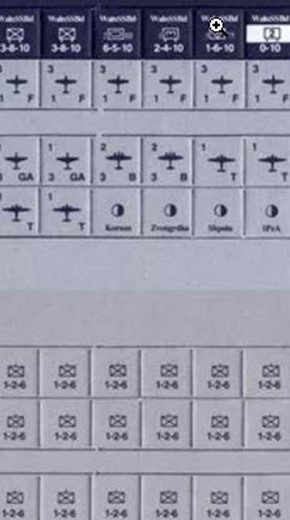
Old counters:
The biggest surgery was the replacement of the supply system, one of the things that made KP 1 different from most games, with a very simple system, albeit with some tweaks of my own. Before, all divisions and corps had their own supply units, and supply and ammunition points had to be schlepped around the map if you wanted to fire your guns. The idea was right, the execution a bit clumsy, and the effect was to greatly slow a game that needed no such impediments.
So I stepped back and analysed – how much supply is needed for a division to fight for a day? Research gave me three answers, from 200 to 50 tons a day. Oh, great. I designed a couple of systems, both simpler than the original, and then stepped back further. Except when unable to trace a supply line, were there any cases during the battle when troops were unable to fight due to lack of supplies? Essentially, no. OK.
So I dropped back and punted. There are no more ammo or supply points, nor supply units. There are traditional lines of supply, except… the first two days the Soviets, having amassed artillery ammunition for the offensive, get to double the effects of their fire. Units able to trace a line one move in length for that unit (varies due to ground condition), fights normally. A unit able to trace a supply line that is MORE than one move is still in Limited Supply, which diminishes its offensive abilities. No supply line and you are penalized in combat and movement, fight with no supply line and your goose is likely cooked. There are provisions for air supply through airfields and air drops.
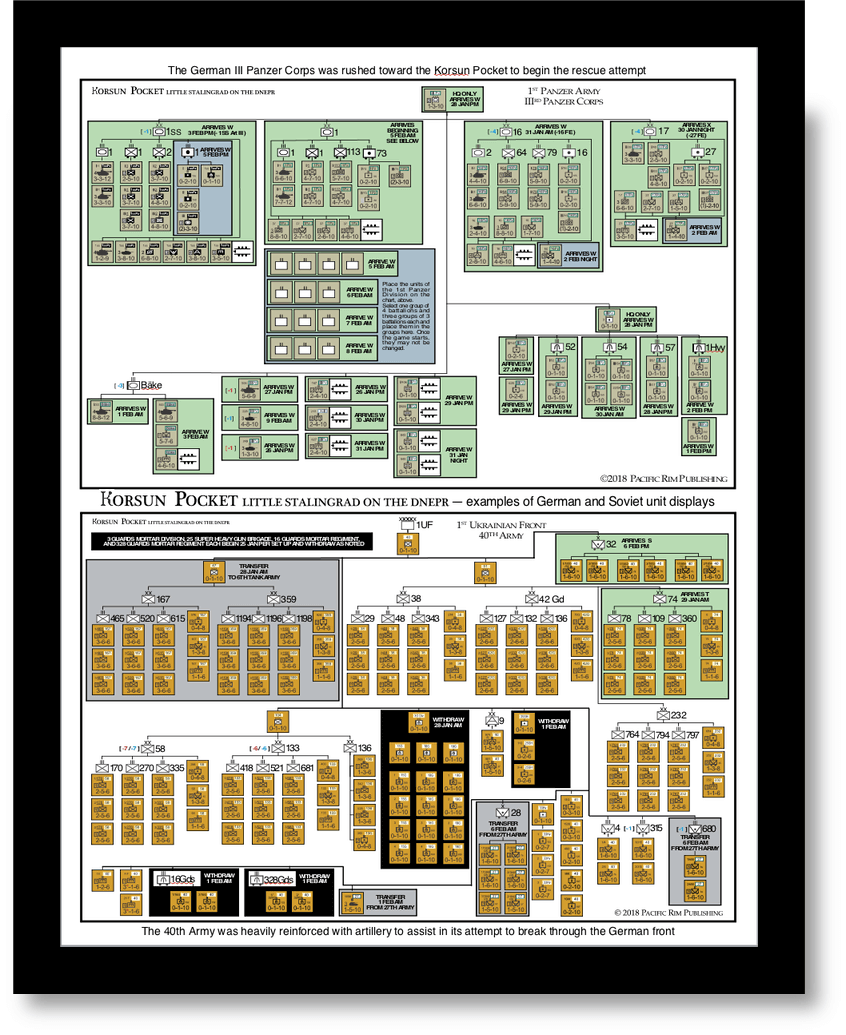
So… the map has been redone, Jeff came up with some gorgeous player displays that display the organizational position for every counter, tells you when and where reinforcements appear, when units withdraw from the map, and also indicate for scenarios set in mid-game what losses units have taken. There are also indications of transfers of units from one army or corps to another.
The game has taken forever for a number of reasons. Some of them are my fault – I didn’t really start work on it for years since I was not certain Jeff was serious. Then there was some confusion in the development team. Jeff and I put together a very good agreement. Everyone working on the game had a chance to be heard, also playtesters, and players who discussed it online or with us. But all questions of design, and the graphics presentation’s style were mine to decide, end of discussion. All questions of publishing – production, advertising, sales, etc, could also be discussed, but the decisions were made by Jeff. We also had a clause in the contract, that THE priority issue was that when the project was completed (or abandoned), we would still be friends. There have been some tense moments, some shouting, but we have stuck to that clause faithfully, and we have a product I think gamers will be very happy with.
At this point, the word is there will be 500 copies printed (504 counting the prototypes?), when they’re gone, they’re gone. To get one you have to order from PacRim. That will get you the discount to $225 a copy. We need about 150 more commitments at this point. The prototypes should be in our hands by sometime in March, will go to reviewers, who will post videos showing the game and their impressions. Hopefully that will get us over the goal line, at which point Jeff will tell the printer – GO!! Shipping in the US is on PacRim.
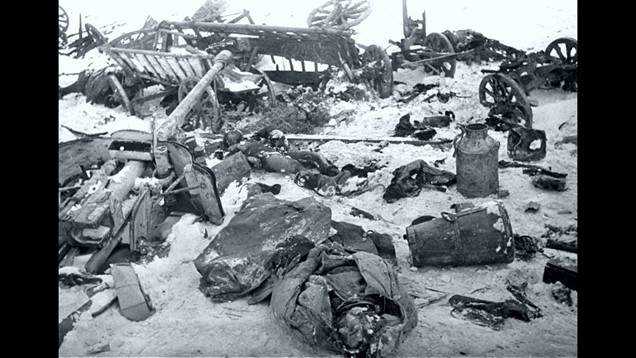
It is a big package, 2400 counters, 4 game maps, piles of player displays, 4 situation maps for set up (one with just the map on it, for duplication by players to plan or record on), 1D6, player aids (turn record, ground condition, charts and tables.) My one regret was that I was not able to convince Jeff to keep my stand-up weather, turn, and ground condition displays. I argued, couldn’t budge him. You can always make your own.
The first edition was done very much my way. No grid #s, faded back hex grid, I was trying to make it look as much as possible like a map, not a game board. This one is more conventional. It has German fortifications inside the salient printed on map, along with some additional airfields. The tank counters have silhouettes on them. I tried to stay away from the flashy style of modern counters, lots and lots of colors, symbols, shapes, and hoo ha. There is a color coding to help keep who is part of what unit clear.
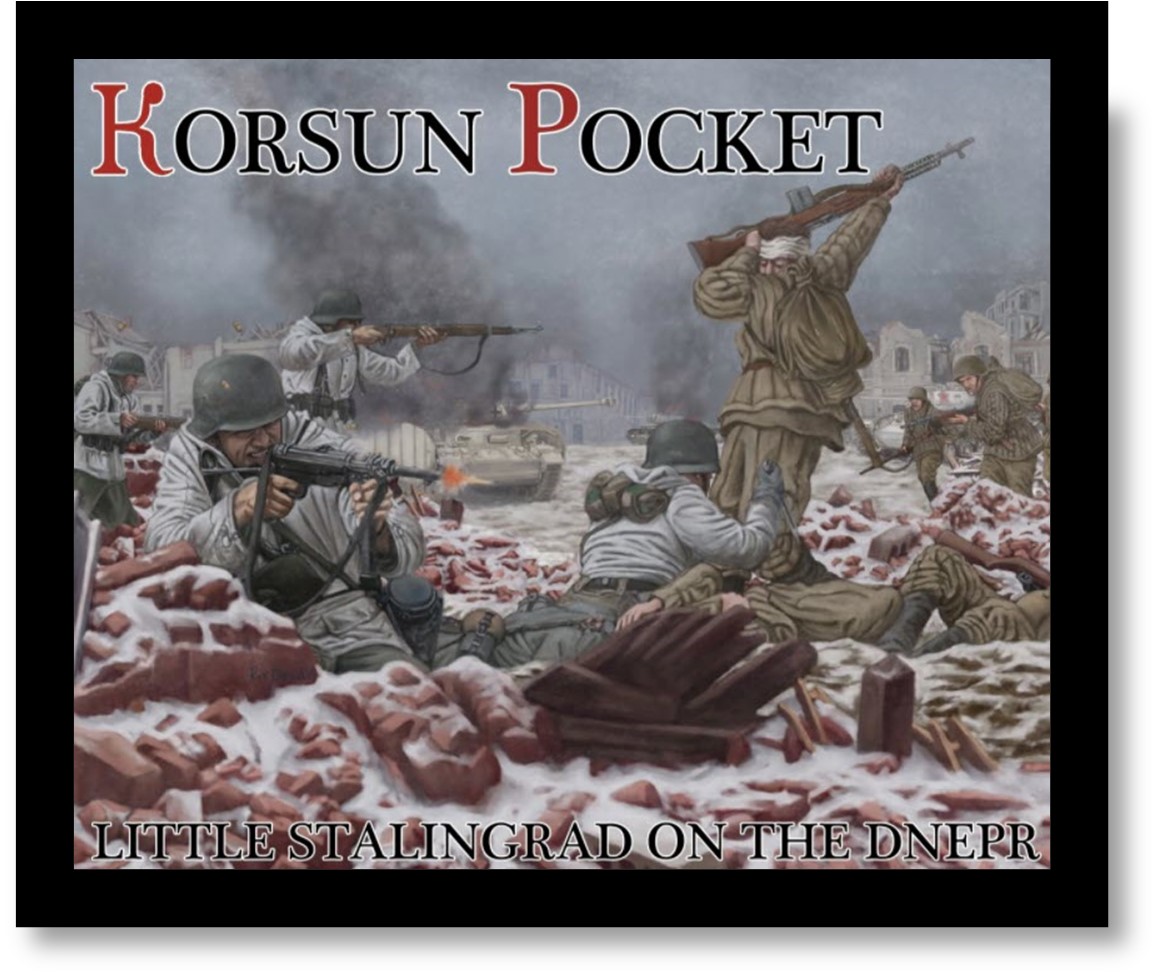
You can order it from https://justplain.com/about The information on that page is mostly correct (there are only two books now – Rules and Scenarios/Historical Notes/Designer’s Notes), but you can see what the player displays (the number mentioned of them, calling them Order of Battle charts have both changed), map and what the counters will look like. The information on how many commitments we have received is out of date.
This will be my last wargame, I’m writing the history of the defense of Moscow in October, 1941 (30 chapters done, maybe 70 to go?), and it will be Pacific Rim’s last game too, Jeff’s health requires his retirement. As I told him, his health is first, as if he dies, he would be in breach of contract – I am not friends of dead people. It has been a long strange trip, so many proof readings I hesitate to guess how many, some backing and forthing, some confusion, but I do believe we have done a hell of a job. Enjoy.
I could weep. I saw the original KP on my friend Ian’s floor about forty-odd years ago. He was in the process of setting up and gave me a tour of the game. I couldn’t have been more impressed, not least because I had had no clue about the situation. We loved the whole Peoples Wargames ethos, too. We were over the politically-motivated silence about the titanic effort and terrible sacrifice of the people of the Soviet Union during the war. And it was great to buy a product that was proudly union made in the USA. I can’t do monsters but I would dearly love to. This revision sounds just terrific. It is interesting that your research confirms the worth of the traditional supply system. I hope you sell 5000. Best wishes from Wollongong, “Union Town”, New South Wales.